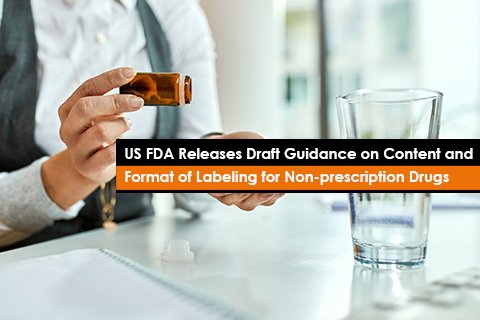In September 2022, the United States Food and Drug Administration (US FDA) released a draft guidance document titled “Statement of Identity and Strength - Content and Format of Labeling for Human Non-prescription Drug Products.” The draft guidance aims to enhance the consistency of labeling for Over-the-Counter (OTC) drugs. It addresses the statement of identity and drug strength for OTC products. According to the FDA, the purpose of this guidance is to assist drug manufacturers in ensuring consistent content and format in the statement of identity and strength for all non-prescription drug products, allowing customers to assess products.
The guidelines apply to all non-prescription pharmaceuticals sold in the US, including FDA-approved products and monograph drug products. It explains the FDA's interpretation of 21 CFR Part 201.61, which governs the statement of identity. The FDA interprets the law for drug products without a registered name as needing the active ingredient's name, the pharmacological category, and the strength. The established name is defined in the proposed guidance as the official name defined by section 508 of the Food, Drug, and Cosmetic Act. Drugs that do not have an official name but are recognized in an official compendium, such as the United States Pharmacopeia (USP), should use the compendium's official term. According to the guidance, the established name for drugs that do not fall into either category should be the "common or usual name" of the drug.
For all human non-prescription drug products, the FDA has provided suggestions for the content and format of the mandatory statement of identity and drug strength, which must be prominently shown on the Principal Display Panel (PDP). OTC monograph drug items should use the monograph's statement of identity. However, if the OTC monograph statement of identity is inconsistent with the draft guidance, the FDA does not intend to act against companies that follow the guidance as long as the drug product is marketed per all other applicable regulations containing the OTC drug monograph. Furthermore, the Route of Administration (ROA) should be mentioned unless it is evident. For goods containing more than one active ingredient, the FDA recommends that this information be vertically aligned for each active component.
The identity statement must be in "a font reasonably related to the most prominent printed matter on the PDP,” according to the regulation. According to FDA comments in a few Warning Letters, the statement of identity must be at least 50% of the most prominent printed matter. According to the FDA, the strength of the drug should also be in boldface type and should be listed right after the statement of identity.
As stated earlier, the FDA released a draft version of this guidance seeking comments from the industry. The Agency asked the industry to share its comments by November 08, 2022, to ensure that it considers the public comment on the guidance before it starts work on the final version. As and when this guidance is finalized and released, the OTC manufacturers will be expected to comply with the requirements stated in it. Hence, the manufacturers will have to proactively update product information on the labels and Patient Information Leaflets (PIL) to comply with the new requirements.
We at Freyr have vast experience in setting up and implementing labeling processes, creating Core Patient Information Leaflets (CPIL) and auditing existing labels, and updating them according to the Health Authority requirements, and we can assist and support you to stay compliant. Consult Freyr for compliance best practices.





